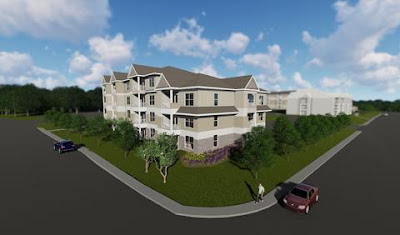Affordable Housing Definition Conundrum
Who ends up getting served?
The recently released 2011 Household Income Levels for Massachusetts, and the Boston area in particular, have raised significant questions about who is supposed to be helped versus who will actually be helped, based on the HUD figures and the State’s subsidizing agencies’ interpretation of these income categories. Those of us dealing with households at the ground level, ie., assisting in the application process, recognize the dilemma, as follows:
• The Area Median Income for the Boston MSA increased from 2010 to 2011
• The 50% AMI numbers as published by HUD also increased from 2010 to 2011 (because the overall AMI increased)
• For properties where rents are calculated from the 50% AMI numbers, this means that rents also increased
Now, no MSA can have a higher 80% AMI income limit than the United States 100% AMI number unless the area is designated a “High Housing Cost Area”. But, isn’t it perplexing that by HUD’s strange methodology, Boston is not considered a “High Housing Cost Area” – even though Boston has some of the highest housing costs in the country? That means that Boston’s 80% AMI figure for a 4 person household cannot be higher than the United States 100% AMI figure for a 4 person household. The 100% AMI number for the U.S. is $64,200, so that becomes Boston’s de facto 80% AMI income limit for a 4 person household. The 80% income limits for households with 1-8 people are then calculated from this new income limit. And because the Median Income in the United States went down from 2010 to 2011, that means that the 80% AMI income limits for Boston also went down from 2010 to 2011.As to why the United States Median Income should determine what the 80% Income Limit is for a 1 (or 2-8) person household in Boston, I see no persuasive argument in support (probably because it has been 42 years since I worked for HUD). I don’t believe the national numbers should be relevant to local Metropolitan Statistical Areas, but they are. So that is how Boston’s actual AMI can increase and how their 80% AMI numbers can decrease. It is (roughly) because the 80% numbers are tied to national numbers and everything else is tied to local numbers. Another problem: the 80% AMI numbers published by HUD (which are capped as I described above) represent actually about 69% AMI for Boston. Therefore, a household which earns 70% of AMI in Boston is considered “over income” for a development where they have to make less than 80% of AMI (because the 80% AMI income limits are tied to national and not local numbers).Another way of looking at is that the “true” 80% AMI numbers for Boston should be approximately:1 person $54,0402 person $61,7603 person $69,4804 person $77,200
But the numbers published by HUD (the “capped” 80% AMI numbers) are:
• 1 person $44,950
• 2 person $51,400
• 3 person $57,800
• 4 person $64,200
In conclusion, unless the State agencies change their position, households earning between 70-80% of the Boston AMI – IN REAL DOLLAR TERMS – cannot qualify for housing which is supposed to be targeted precisely for them!
Posted in Affordable Housing | Tagged 80% Income Limit, affordable rents, AMI | Comments Off on AFFORDABLE HOUSING DEFINITION CONUNDRUM
This blog "Affordable Housing Definition Conundrum" originally posted HERE.



Comments
Post a Comment